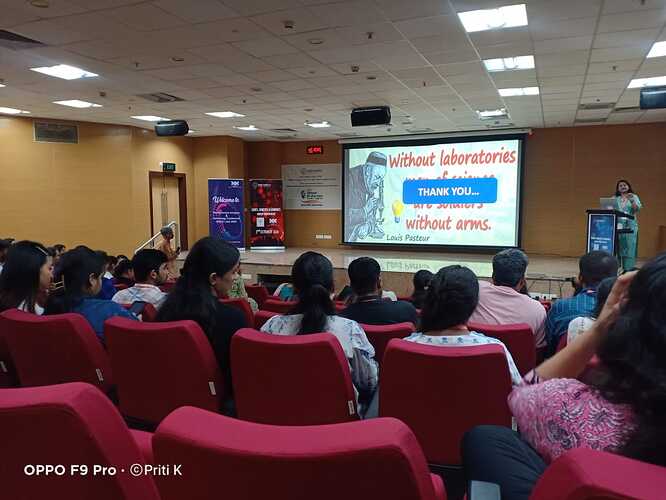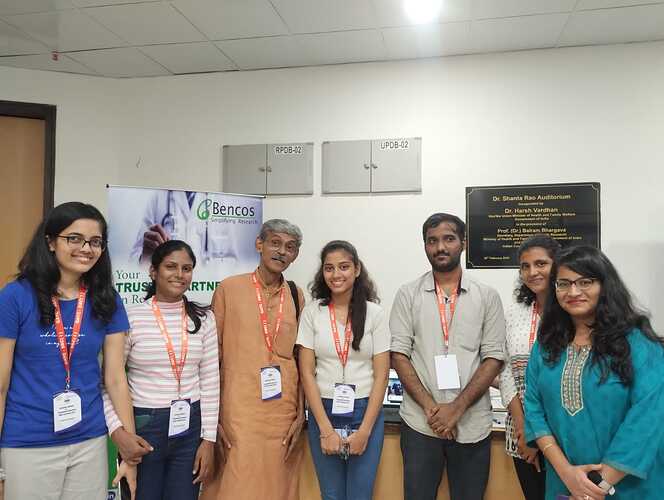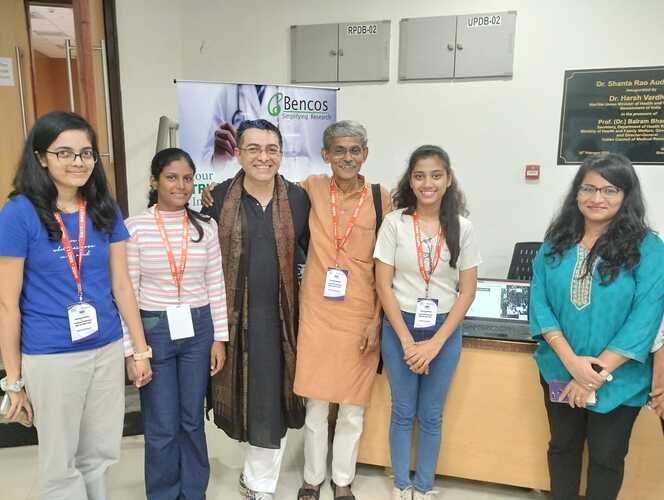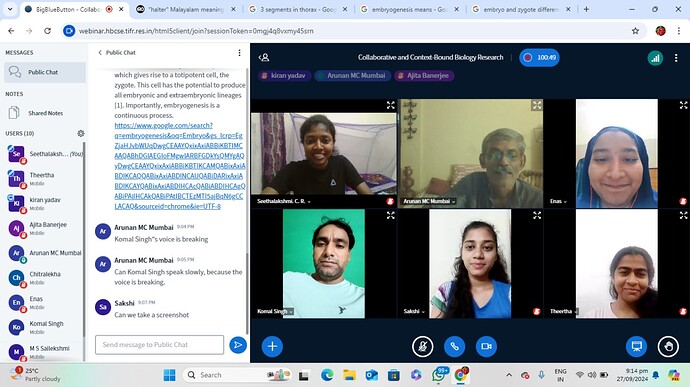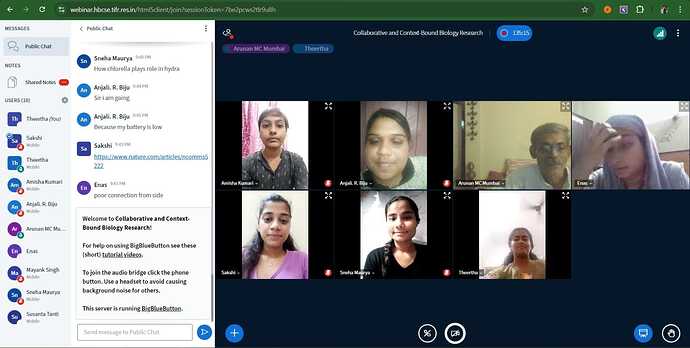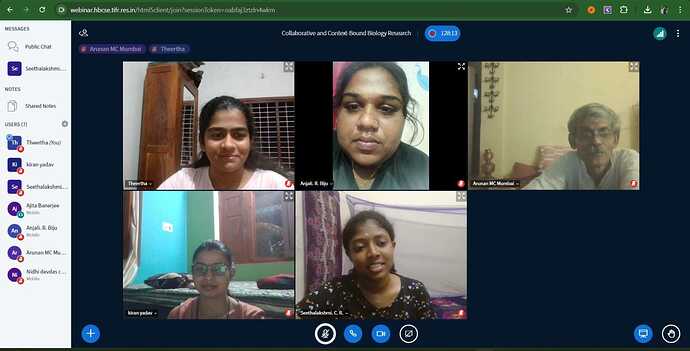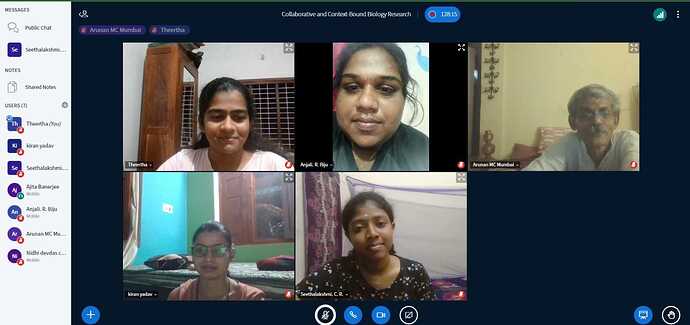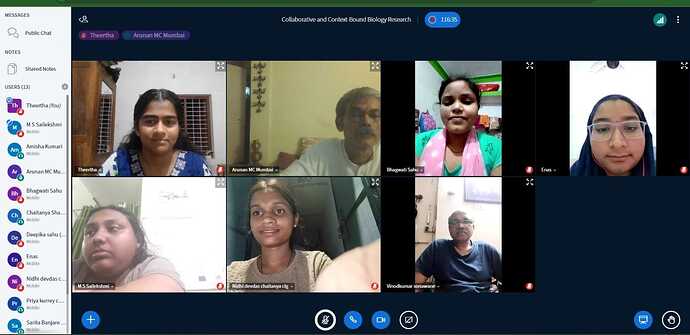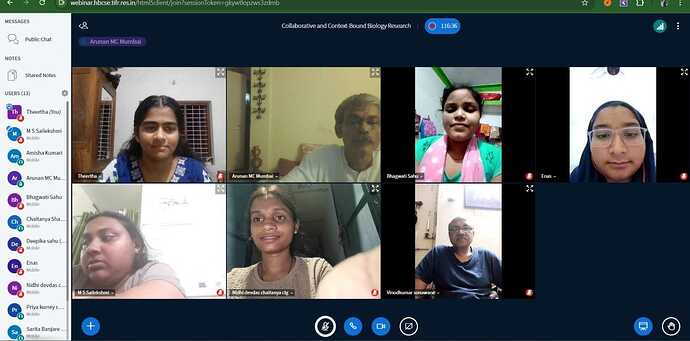CUBE at the Conference:
Arunan Sir received an invitation for Cubists to present a poster at NIRRH, and we collaboratively prepared the presentation just the night before.
Priti and Sakshi presented a spot presentation at NIRRH.
Akansha, Shahin, and others from Sophia College Mumbai, also participated in the conference.
Active CUBE Groups:
CUBE Patna
CUBE SN Varakala
CUBE SN Chempazhanthy
CUBE Pamgarh
Highlights of Chatshaala:
1)Butterfly Model Systems: Butterflies select specific host plants for laying eggs, which serve as food for the caterpillars once they emerge. Research questions include: how butterflies sense host plants, as discussed by Sneha Mourya and others. We discussed about various receptors:
Chemoreceptors:
Taste: Gustatory receptors
Smell: Olfactory receptors
Touch: Thigmoreceptors
Heat: Thermoreceptors
Mechanical Stimulus: Mechanoreceptors
Light: Photoreceptors.
2)Isolation of Soil Nematodes (C. elegans): Cubists are trying to isolate the soil nematode C. elegans from Indian soil. Amritha made this in her home lab in 2023, collaborating with Shalini, Batul, Sakshi, and others.
Methods we discussed:
Take 2 potato slices.
Add soil collected to the periphery of one potato slice (Test) and leave the other without soil (Control).
Add 2 drops of milk to the center of both slices to visualize the nematodes that emerge from the soil.
Replicates can also be conducted to confirm results.
3)Earthworm: From nematodes to earthworms: The primary question addressed was the food of earthworms and how to locate them in the soil.
Anjali, an 11th-grade student, made a tissue paper cup culture in her home lab. Bhagwati and Nidhi from Pamgarh have been culturing earthworms in their college.
4)Snail: We discussed the anatomy of snails and compared it to that of earthworms. We also refered the Nobel Prize-winning work of Eric Kandel related to the response of touch in snail tentacles, as well as the olfactory senses of snails used to locate food.
5)Fruit Fly: Zaheda from Patna starts observing fruit flies in her home lab. We discussed their culture and food preferences in Chatshaala.
Context to Curriculum:
1)A key question raised was about the food of earthworms and how they digest cellulose as animals lack the cellulase enzyme. We also discussed how humans digest cellulose, including the biochemistry behind the structure of cellulose and its differences from starch and other organic molecules.
2)We discussed the homeotic mutations in fruitfly and compared them to double-layered hibiscus. Sailakshmi from SN Varkala found a photo of double-layered hibiscus, which we connected to two-winged fruit flies.
3)We discussed the biochemistry involved in the decay of organic matter.
TINKE Moments:
1)Pyruvate having a vinegar smell
2)Double-layered hibiscus and reduced stamen in hibiscus.
